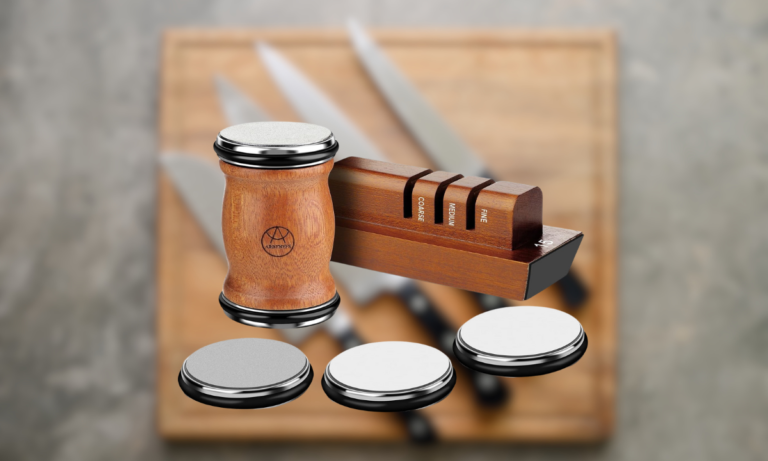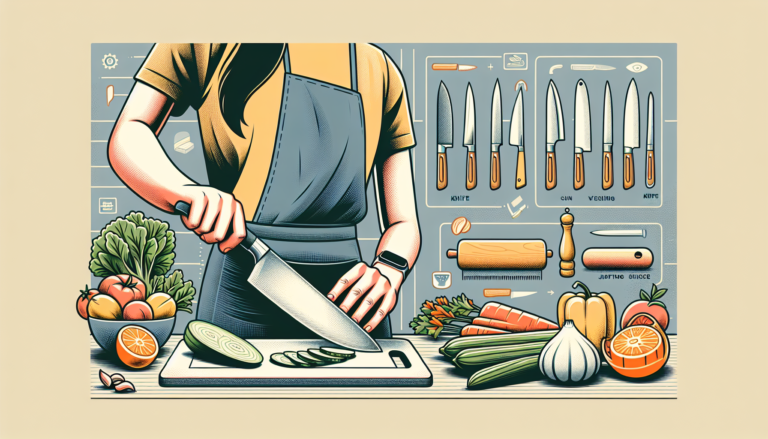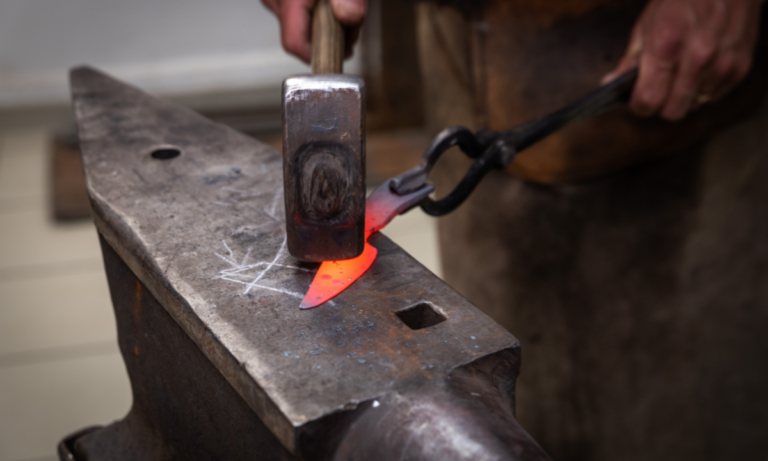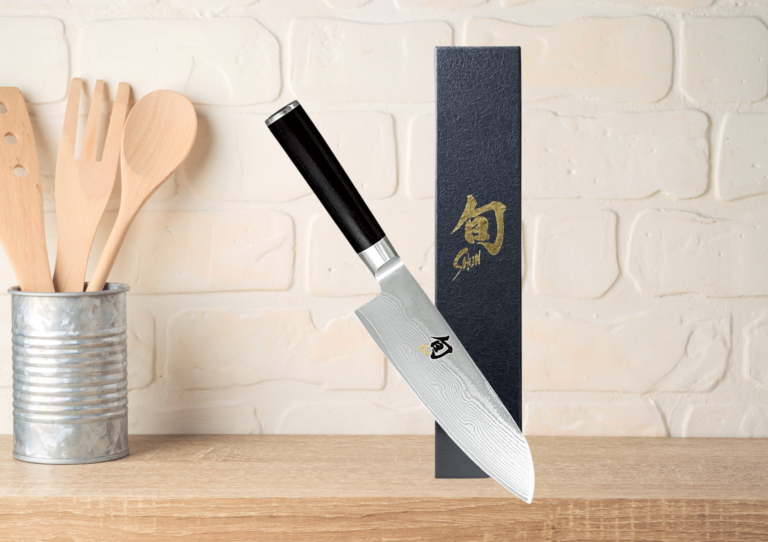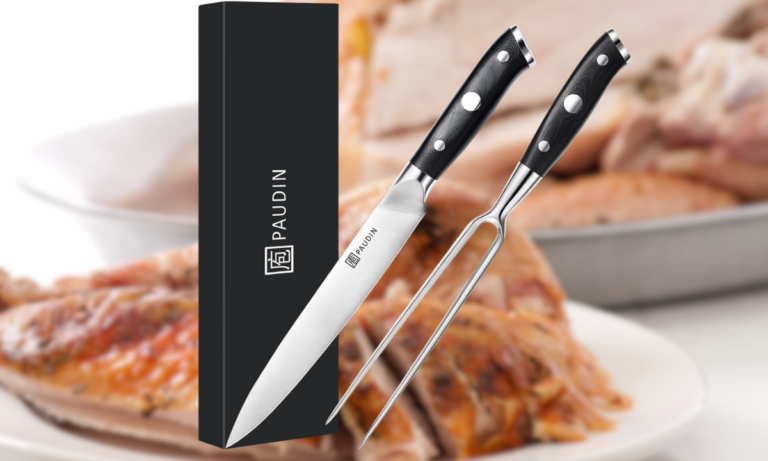Knives 101: A Beginner’s Guide To Basic Knife Types And Uses
Ever wondered how chefs manage to slice, dice, and chop with such precision and ease? The secret often lies in their knowledge of using different types of knives. Knives are an essential tool in any kitchen, and understanding their variety can transform your cooking experience. Whether you’re just starting out in the kitchen or looking to refine your skills, knowing your knives inside and out can make a significant difference.
Understanding the Importance of Knives in the Kitchen
Knives are not just another kitchen instrument; they are the cornerstone of culinary arts. A good set of knives can elevate the efficiency and pleasure of preparing meals. For beginners, understanding the nuances of knife types and their specific uses is fundamental to growing as a proficient cook.
The Role of Knives in Cooking
Each knife is designed for a specific purpose, impacting how you handle ingredients, the texture of your cuts, and even the flavors in your dishes. Different knives can help you achieve precision, speed, and safety, ensuring that your cooking process is as smooth as possible.
Basic Knife Types
Let’s explore some of the most common kitchen knives and their uses. This guide will highlight their unique attributes so you can pick the right one for your needs.
Chef’s Knife
The chef’s knife is often the workhorse of the kitchen. Typically 8 to 10 inches long, it’s designed to perform well at many different kitchen tasks, rather than excelling at any one particular task. You can use it for chopping herbs, slicing vegetables, and dicing fruits, making it a versatile tool for any aspiring cook.
Paring Knife
A paring knife is smaller, around 3 to 4 inches long. It’s perfect for more delicate work like peeling, trimming, and other intricate tasks where precision is key. With its nimble size, it’s the go-to choice for detailed work.
Serrated Knife
This type of knife features a saw-like edge and is ideal for cutting through items with a hard exterior and soft interior, like bread and tomatoes. Its unique design prevents squishing, ensuring clean, effortless cuts.
Utility Knife
A utility knife is a middle ground between the chef’s knife and the paring knife, typically around 6 inches long. It’s versatile for everyday tasks and serves as a good multipurpose tool when a chef’s knife is too large and a paring knife is too small.
Santoku Knife
Originating from Japan, the Santoku knife features a flat blade edge and a sheath that allows chefs to complete slicing, dicing, and mincing tasks effortlessly. It’s usually lighter with a thinner blade compared to the classic chef’s knife, and is excellent for more precise cuts.
Boning Knife
Boning knives have a narrow blade and are used to remove the bones of poultry, meat, and fish. They can navigate around bones with minimal waste, making them crucial for butchery tasks.
Cleaver
Recognizable by its thick and heavy blade, the cleaver is mainly used for cutting through thick cuts of meat and bone. Its weight does most of the work, giving it unparalleled power for specific types of cooking tasks.
Fillet Knife
Similar to the boning knife but slightly more flexible, the fillet knife is designed specifically for fish. Its thinner, more flexible blade helps in achieving clean fillets with ease.
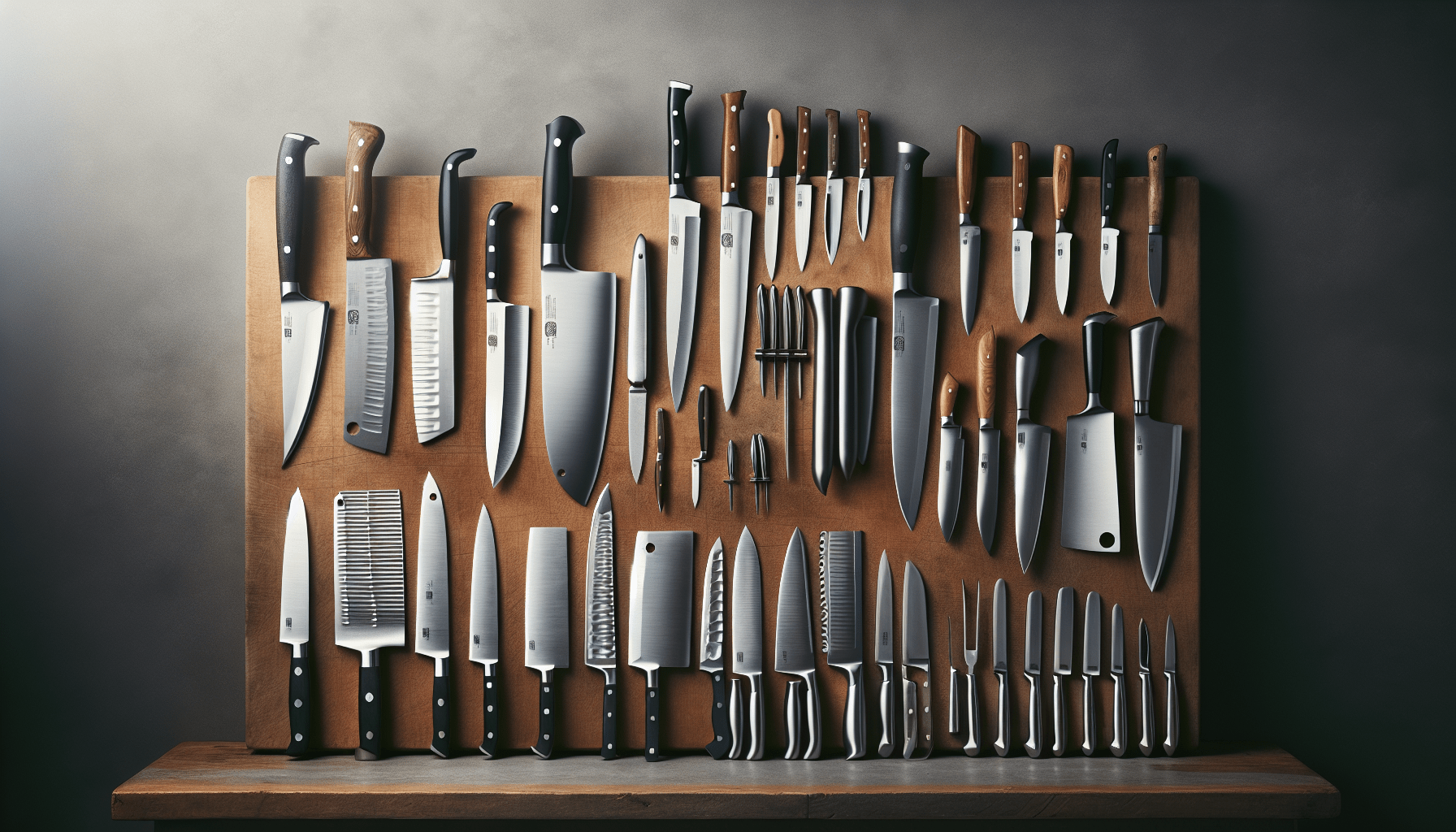
The Art of Knife Selection
Choosing the right knife depends on several factors including your cooking needs, your comfort level, and the types of food most commonly prepared. Here are some considerations when selecting kitchen knives:
Material Matters
The material of the knife blade plays a significant role in its performance and durability. Here’s a quick look at popular materials:
| Material | Description |
|---|---|
| Stainless Steel | Popular for its resistance to rust and durability, though it may need frequent sharpening. |
| Carbon Steel | Known for maintaining a sharp edge longer, but it’s more prone to rust without proper care. |
| High Carbon Stainless Steel | Offers the benefits of stainless and carbon steel, combining sharpness and resistance to corrosion. |
| Ceramic | Extremely sharp and lightweight, but fragile and can chip or break if misused. |
Handle Comfort
The handle of the knife should be comfortable and offer a good grip. Whether it’s wood, plastic, or composite, the key is to feel secure when using it, reducing the risk of accidents.
Knife Maintenance and Safety
Taking care of your knives prolongs their life and maintains their functionality, while safe usage habits ensure an enjoyable and hazard-free cooking experience.
Cleaning Your Knives
Proper cleaning is crucial to maintaining the longevity and hygiene of your knives. Instead of haphazard cleaning:
- Hand wash knives immediately after use with warm water and mild soap.
- Dry them thoroughly with a clean towel to prevent rust or corrosion, especially for carbon steel knives.
- Do not put knives in the dishwasher as the intense heat and banging against other objects can damage them.
Storing Your Knives
Storing your knives properly is vital for maintaining sharpness and safety. Here are a few effective ways:
- Knife Blocks: They keep knives organized and provide a safe place for every knife.
- Magnetic Strips: These save space and allow for quick access, though they require careful handling to prevent damage.
- Knife Sheaths or Edge Guards: They protect the blade from damage during storage in drawers or while transporting.
Sharpening Techniques
Keeping your knives sharp not only enhances performance but also makes them safer. Here’s how you can sharpen your knives:
- Whetstones: Offer the most control, allowing for precise sharpening angles.
- Sharpening Steels: Though misnamed, they are actually for honing—a process that realigns rather than sharpens the blade.
- Electric Sharpener: A convenient option for quick sharpening though it might wear the knife down faster if used excessively.
Safe Knife Handling
Observing safety while handling knives minimizes accidents. Here are some tips to keep in mind:
- Always cut away from yourself and keep your fingers clear of the blade.
- Use a secure cutting surface to avoid slippage.
- Hold the knife properly with a firm grip, and do not try to catch a falling knife.
- Ensure your knife is sharp; dull knives can slip and lead to injury.
The Functional Versatility of Knives
Each knife serves a specific function, optimizing performance in the kitchen. Here’s how you can maximize their potential:
Efficiency through Specialization
By using the right knife for the job, you gain efficiency. A serrated knife cutting through a ripe tomato is much more effective than a chef’s knife, just as a paring knife is optimal for coring an apple.
Adapting to Culinary Needs
Different cuisines and cooking styles may require specific knife types. For example, Japanese cuisine often employs the delicate precision of a Santoku or Nakiri knife.
Exploring Knife Skills
Proficiency in knife skills can enhance your culinary capabilities. Here are some foundational techniques to practice:
Basic Cutting Techniques
- Chopping: Utilized for items like herbs where consistent size is less critical.
- Dicing: Ensures uniform pieces, enhancing even cooking, especially in soups and stews.
- Slicing: Applies to preparing vegetables or proteins with clean, long cutting motions.
Advanced Techniques
- Julienne: A precision cut resulting in long, thin matchstick-shaped slices usually for garnishes.
- Chiffonade: This technique involves stacking and rolling leaves like basil and cutting them into thin ribbons.
Conclusion: Building Your Confidence with Knives
Understanding and efficiently using kitchen knives can significantly impact your cooking journey. As you familiarize yourself with different types, maintenance, and techniques, your confidence in handling these essential tools will grow. With practice and care, you’ll not only enhance your skills but also find more joy and satisfaction in your culinary endeavors. Remember, a good cook knows their tools well, and your knowledge of knives is a critical step on this path to mastery.
